What is A/B Testing? Guide, Benefits, Examples, and More!
We are living in an age of data-driven marketing, far from the days when advertisers merely made choices based on speculation and insight and hoped for good effects. The new marketer has a science and data-based approach. And A/B testing is the easiest way to eliminate uncertainty and intuition when making promotions or designing websites, advertisements, or other digital product decisions.
You will be agile, but most importantly you will have assured Input on what works and what doesn’t by building on your strategies on A/B tests and data. You would be more able to determine what your customers really want and to spend time and resources on what you want.
What Is A/B Testing?
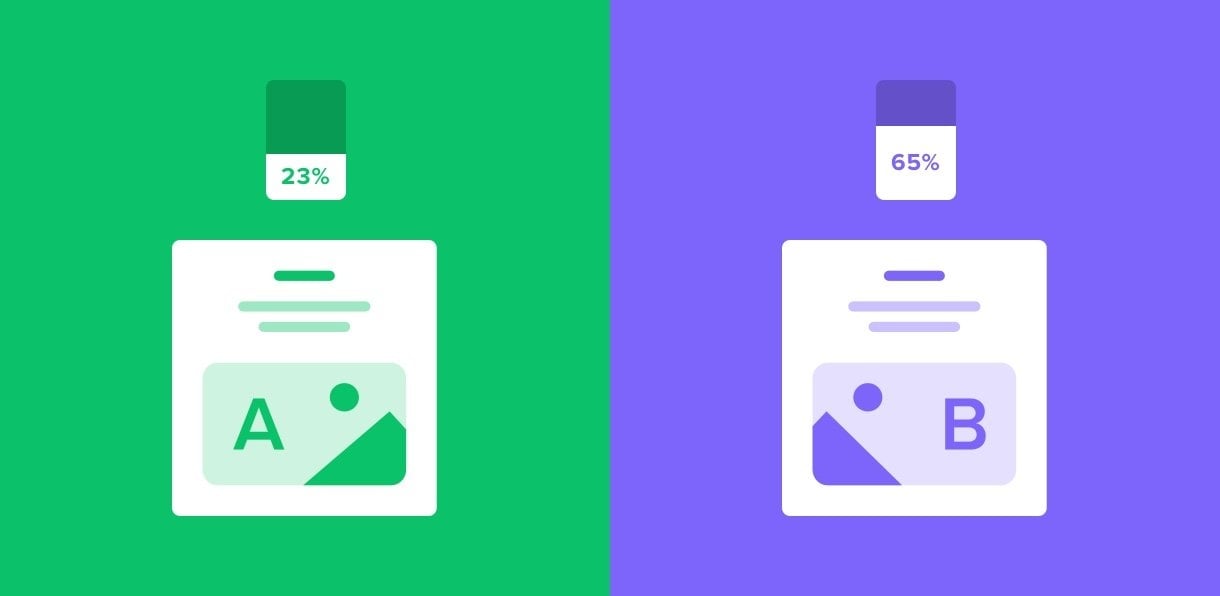
A/B testing is a method in which two variants of the same web page are presented to separate parts of users at the same time and where more conversions are performed. A/B testing is one of the most effective ways in digital marketing to optimize your website funneling. The more your funnel is optimized, the greater the rate of conversion.
The number of visits to the site in the online environment corresponds to the number of chances that you have to grow by attracting new customers and establishing partnerships with established ones. You will determine if your website is receiving strong traffic and converting more users from your conversion funnel.
The variant that gives higher conversions in A/B tests is usually the winner and will help you refine your site to achieve better results. Each website has specific conversion metrics. It can be selling the goods for eCommerce, and it can be creating eligible leads for B2B. A/B testing is part of the overall method for optimizing conversion rate (CRO). Use them to consider and refine the conversion funnel based on these data and to gain quality and quantitative information from your users.
A/B Testing vs Split Testing
Split-tests and A/B-tests are often used interchangeably. In truth, they are two distinct test forms.
A/B testing entails comparing two separate versions, such as CTA text or picture on the homepage, based on modifying a single feature of the marketing tool, while split-testing allows two separate designs to be compared.
How Does A/B Testing Work?
You must build two versions of one piece of content with modifications to one attribute to perform an A/B test. Then you can present the two versions in two identical audiences and examine which one was successful for a given amount of time that is long enough for a precise conclusion.
For example, suppose that you’ve got two templates for a landing page and would like to decide which one is going to work best. You will give the landing to one group after creating your designs and submit the other version to the second group. Then you see how the indicators like traffic, clicks, or conversions work per landing page.
If the final result informs one version that outperforms the other, then it’s a good sign for you to start investigating an in-depth explanation that might trigger some ideas for your further landing page creation progress.
The Benefits of A/B Testing for Marketers
A/B testing offers a variety of advantages for a marketing team, depending on what you decide. Even so, these tests are of great use to a company because they are cost-efficient and rewarding.
As today companies are disappointed by all of their monthly leads, on the other hand, eCommerce stores struggle with a high rate of cart abandonment. In the meantime, there is still a reduced rate of engagement of the media and publishers. Any typical issues, such as leaks from converting funnels, drop-offs from the checkout page, will impact these key conversion metrics.
As a result, A/B testing is here to deal with these problems.
Reduce bounce rate
The bounce rate of your website is one of the most critical methods to measure your web success. There can be many explanations for the high bounce rate of your website, like so many possibilities, misplaced standards, and so on. When different websites serve different purposes, there is no safe way to address the bounce rate for different audiences.
A/B testing is one way to achieve this. You can try many versions of the feature of your website with A/B testing before the best available version is found. This boosts the user experience, allowing users to spend more time and reduce bounce rates on their web.
Lower cart abandonment rates

Cart abandonment is one of the greatest challenges facing many online and e-Commerce businesses. Many figures indicate that the drop-off rates vary from 40% to 75%. There are several reasons for abandoning carts but changing the cost of shipping when and where checkouts are displayed will allow you to find an appropriate mix to decrease cart abandonment and attract more customers to complete the check-out process. A/B testing is the simplest approach to remove the conjecture to achieve the right combination.
Improve customer experience

Visitors of the website have a common purpose in mind. It could be to get a better understanding of your product or service, purchase a product or read or browse a certain topic. Anyway, the users’ target, as they reach their goal, can face certain typical pain points: it might be a false copy or a hard thing to find the CTA button, like buy it now.
The failure to achieve their objectives leads to a poor user experience. This raises friction and consequently affects conversion rates. To solve the visitors’ discomfort, use data collected from visitor behavior tracking methods such as line graphs, Google Analytics, and website surveys.
Increase conversion rates
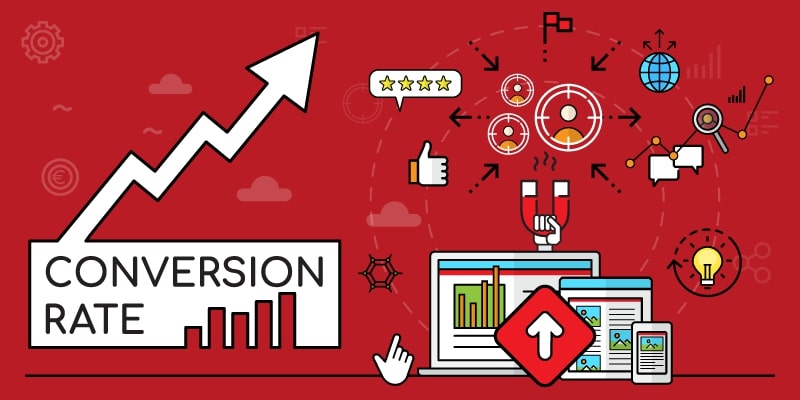
Any quality traffic can be very expensive. A/B testing allows you to maximize your current traffic and encourages you to improve your conversion without having to invest in new traffic. A/B testing can provide a high ROI, and even the smallest modifications can also increase the conversion rates substantially.
The number of people clicking such CTAs to reach a landing page can be changed by testing various positions, colors, or even anchor text on their CTAs. This will raise the numbers of people who complete forms on your website, give their contact details to you, and become members.
Increase website traffic
The number of users using a hyperlinked title can be changed by testing various blog posts or homepage titles on your pages. As a result, traffic on the website will grow.
Minimize risks
In certain cases, major improvements may lead to large costs or strategic adjustments. A/B testing may be used before making big decisions and helping you to assess visitor and consumer behavior on your website. In brief, A/B testing lets you prevent needless risks by empowering you with optimum efficacy and reliability to target capital to improve the ROI or it builds on short-term conversions, long-term consumer satisfaction, or other primary metrics.
External variables can influence the test results. Be sure that holidays, major forces, and other events affecting consumer behavior are taken into account when preparing the promotions and evaluations.
What Can You Test With A/B Testing?
The funnel of your website decides the future of your business. Any content you access through your website should therefore be configured to its fullest capacity. This applies in particular to elements that affect visitor behavior and conversion rate.
Headlines and copywriting

The first thing visitors can see on your website is your headline. What decides how the guest goes farther down the converting funnel is the first experience. Therefore, you should be extra careful when copying, drafting, and formatting your webpage. Check if your headline attracts the eyes of visitors as soon as they arrive at your blog. Keep it brief and timely and make sure you speak openly about what is and supports your product or service. Test different fonts, sizes, copies, and messages by A/B.
Test various lengths of paragraphs and persuasion speeds. The paragraph of the body should also correlate with the headline of your website. A well-written title and body will improve the odds that your website can become a magnet converter.
Subject line
The subject email lines have an effect directly on open rates. If you don’t see something you need the subscriber the email will typically end up in the garbage bin. A/B subject testing lines will improve your chances to click. Try questions versus announcements, measure power terms versus each other, and try using subject lines with or without emojis.
Images, videos, and audios

A smart practice is to compare videos against written or short infographics for longer versions if you have a library of videos.
Even stock pictures will influence your A/B testing if you do not currently have a video channel or resource page. For example, whether you have a photograph of someone pointing to your headline or CTA, the picture would of course attract the audience to this feature. Both these A/B tests will help you understand what the audience is responding to.
Page layout
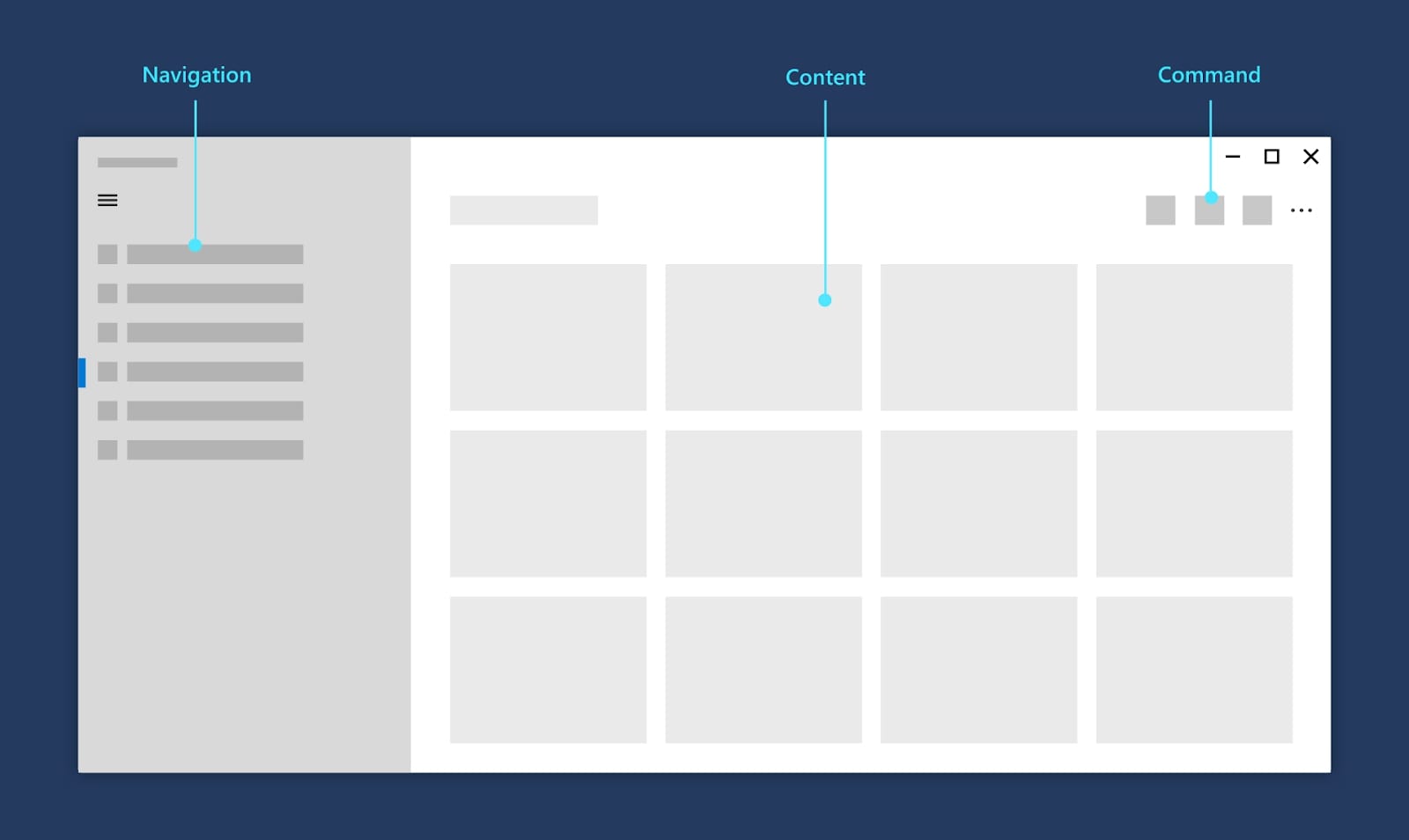
A/B testing can help find the best elements to add to your web display. For example, your product page as an eCommerce store from a conversion point of view is incredibly significant. One thing for sure that consumers like to see it in high definition when purchasing with technical advancement in their latest stage. Therefore, the configuration and functionality of the product page must be optimized. The copy includes photos (product infographics and images, etc.) and videos in the concept and design of a website (product videos, demo videos, advertisements, etc.).
The home page and landing page are also critical pages that need to be built. To find the most optimal edition of these pages, use A/B testing. Test multiple ideas such as putting in plenty of white space and HD images, product videos rather than images, or evaluate various formats. Disclose the pages to analyze dead clicks and detect distractions by leveraging insights from click charts. The less awkward your homepage and landing pages, the easier and quicker visitors can find what they need.
Customer surveys
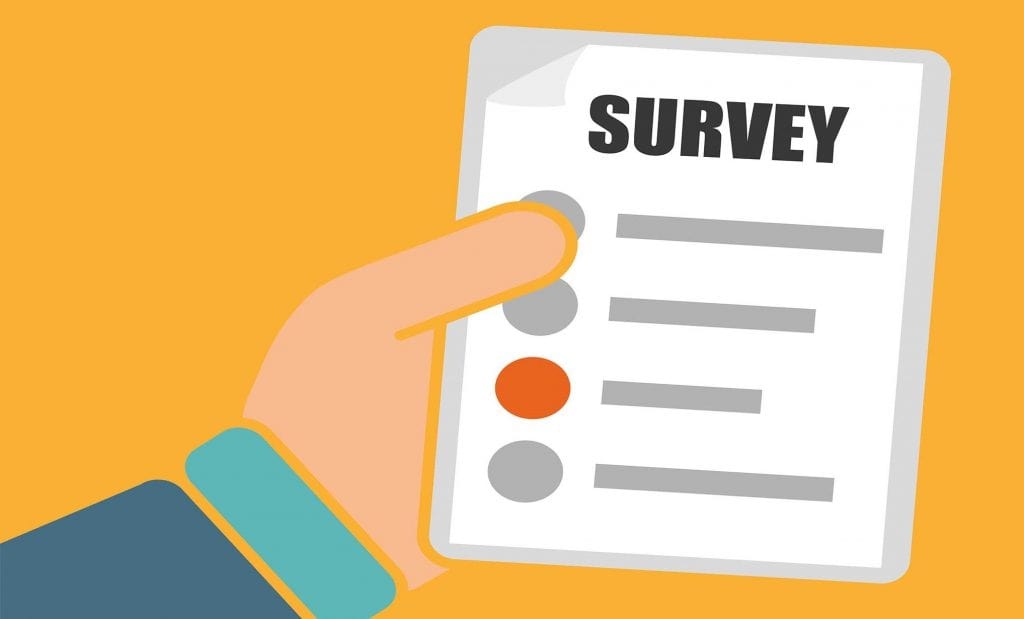
Customer surveys show up as people navigate through your shop. For example, an on-site questionnaire might question visitors on the same page afterward if anything prevents them from shopping today. If so, what does that mean? This qualitative data can be used to improve the conversion rate and copy quality.
Forms are means by which potential clients can contact you. If they are part of the buying funnel, they become even more relevant. Just as no two blogs are alike, there are not two ways for the particular audience. While a short, complete design could fit for certain firms, long forms for their leadership consistency could do well for many others. Through using testing tools such as form analytics, you can evaluate the style that fits best for your audience and work to optimize it.
Navigation
Your website navigation is another aspect you can refine with A/B testing. It is the most important thing in providing an outstanding user experience. Make sure you have a detailed plan for the layout of your Web site and how different web pages are connected and respond to each other.
The home page is the main page from which all other pages appear and all pages are linked. Be sure that the arrangement allows travelers to rapidly find what they need and do not get stuck due to incorrect navigation. The visitors to the page should be guided at any touch.
Call-to-actions (CTAs)
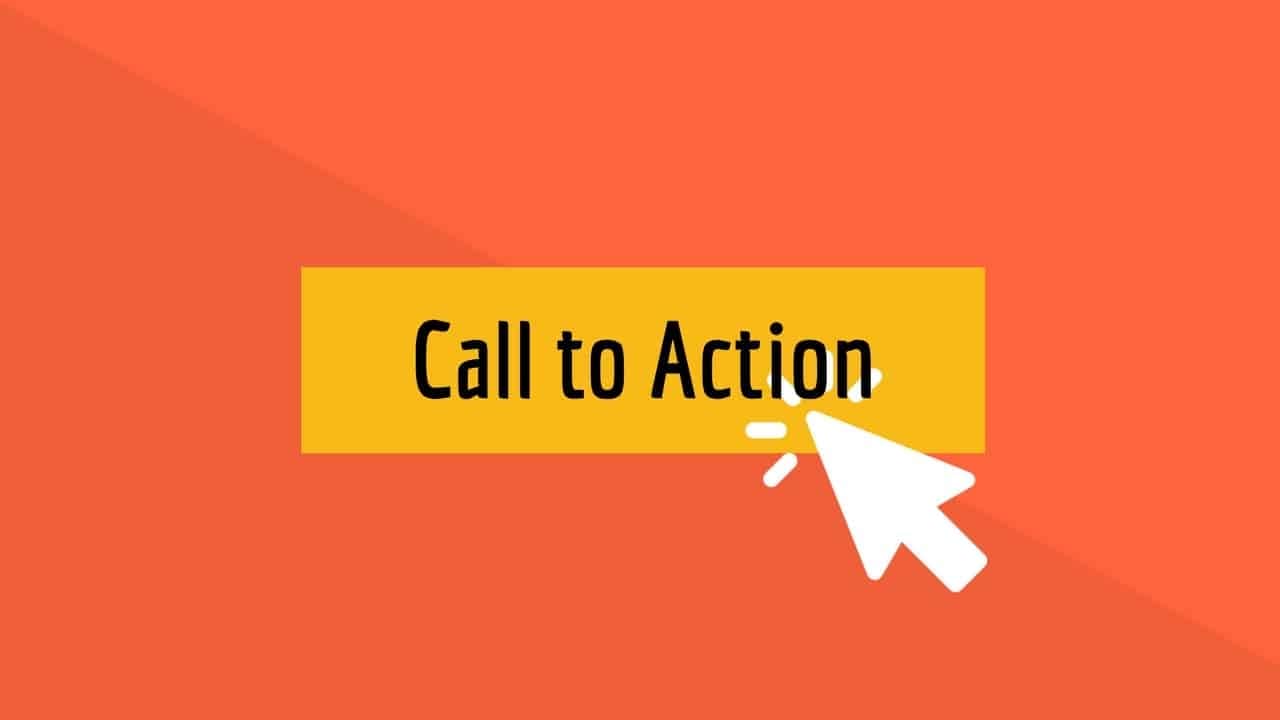
The CTA contains all the actual measures, whether visitors complete their transactions or not, and convert whether they complete the registration form or not and more of those acts that directly affect your rate of conversion. It should encourage the reader to act on your deal since it is too valuable to refuse.
You can have the effect of modifying even one term in your CTA. Other features, for instance, color button, text color, contrast, size, and shape, can influence its output as well. During an A/B test, do not alter several qualities. Don’t even change the font or link color if you want to test the background color, otherwise, you would not know the accuracy of your A/B test results.
Social proof
Social data may take the form of feedback, ratings, or evidence provided by professional subject areas, celebrities, and consumers or may be viewed as evidence, media notices, awards and badges, certificates, etc.
The existence of this evidence confirms your website’s statements. A/B test will allow you to see if it is a positive thing to add social proof, what type of social proof you need, and how much more information you need to add. You can measure social proof, design, and positioning for various applications.
How To Conduct an A/B Test?
A formal A/B testing program will increase the profitability of marketing campaigns by identifying the most important issues that require optimization processes. A/B testing is now shifting from being an independent lifetime thing operation to a more organized and permanent activity which should still be carried out within a well-defined CRO phase.
Step 1: Research

A detailed analysis into how the website is actually working must be performed before developing an A-B testing schedule. You would need to gather data on the number of users on the web, what pages push the most stream, what are the various pages for conversion, etc. Quantitative Website Analytics Applications like Google Analytics and Omniture can be used with the A/B testing tools. You will see these pages, sites the most time used, or pages with the highest bounce rate. These are the most used ones.
Website usage surveys are a common method for the more informed analysis. Surveys can directly interface the website staff with the customer and can also illustrate problems that can be ignored from aggregated results. In addition, contextual views can be derived from visitor experience data collecting methods for identifying differences in the consumer journey.
Step 2: Choose your elements to test
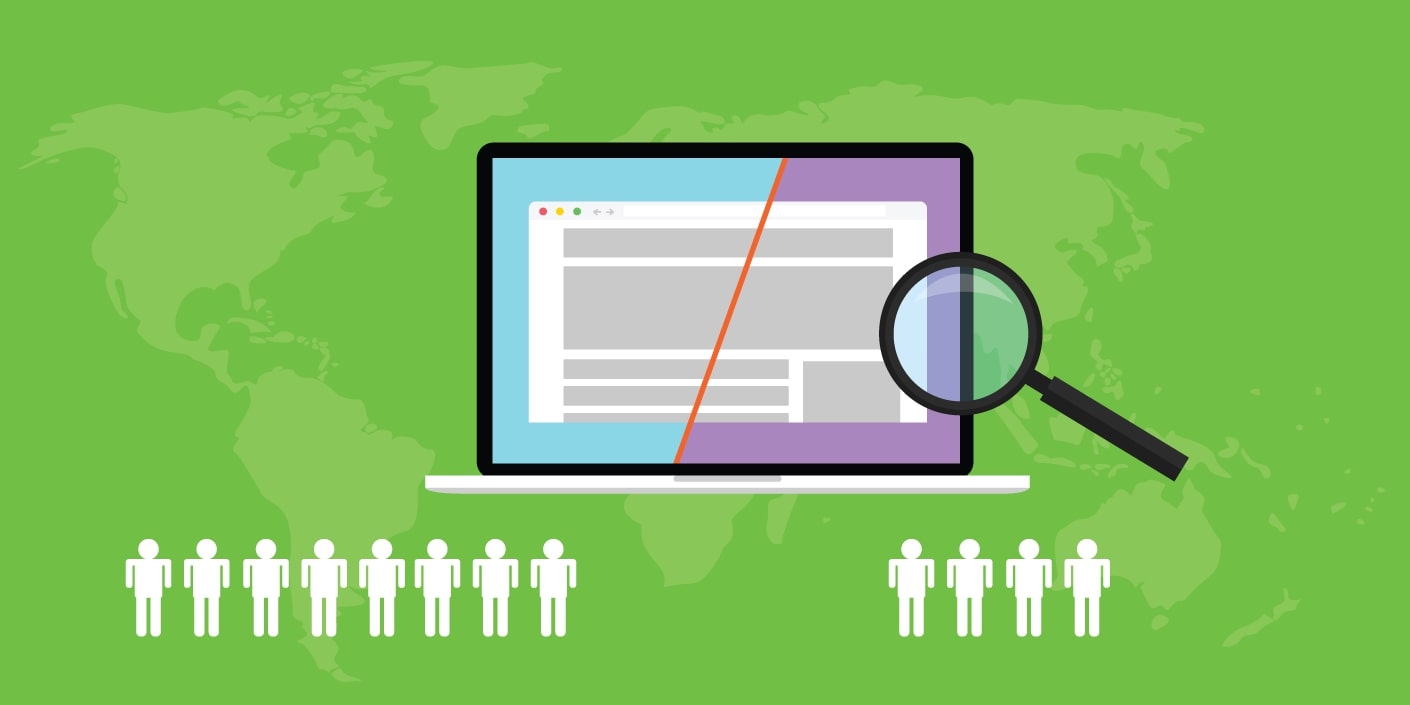
You can find a variety of variables to measure as you optimize your web pages and emails. But to assess how beneficial a change is, you’re going to want to separate and quantify its output from an independent variable, or else you cannot see which variable was responsible for performance improvements.
For a single web page or email you can test more than one attribute, just make sure that you test it one at a time. See the different aspects of your marketing tools and their future style, wording, and interface alternatives. Additional stuff you might test include email subject lines, sender names, and various ways of personalizing your addresses.
Step 3: Collect data

You can only collect data from visitor behavior, using qualitative and quantitative analysis methods. It is now up to you to evaluate these data and to understand them. Analyzing, making strong comments, and then developing websites and user perspectives into the formulation of data-supported hypotheses is the perfect way to use any piece of data collected in this report. When a theory is prepared, measure it against different criteria such as how much faith you will earn, how easy it is to set up, and so on.
A test solution A/B allows you to confirm certain theories statistically, but cannot offer you a sophisticated consumer comprehension of its own. It is also essential to add knowledge supplied by other means to A/B testing. There are many information sources that you can use to get a clearer understanding of this.
- Heatmap and session recording: These approaches allow users to see how they communicate with items on or between websites.
- Customer feedback: Companies offer detailed input from their consumers, such as opinions listed on the site, or questionnaires for customer service. Customer surveys or live chats may complete their study.
- Website analytics data: Although this data does not clarify user behavior, it may lead to conversion problems, such as identifying and lowering shopping cart abandonment. You can also determine which pages you can first try.
- Customer evaluation: Though constrained by the sample size, consumer evaluations can include a host of knowledge that cannot be otherwise provided by quantitative techniques.
Step 4: Form a hypothesis
In order to detect conversion issues and to clarify user behavior, the A/B tests must be provided by two pieces of information. This process of research is crucial and can help you build clear theories.
Your formed hypotheses should be connected with a specifically identified cause-related problem and a potential solution must be identified. The estimated outcome which is specifically related to the KPI to be tested should also be indicated. Perhaps a problem statement and a theory are to be presented here.
For example:
Problem Statement: “The form of lead production is too long and causes unnecessary friction.”
Hypothesis: “We will maximize the number of leads by increasing the number of form fields from 30 to 20”.
Step 5: Create variations
The next move should be to construct a variant based on your hypothesis and validate it with the current version in the A/B test. One difference between the modifications you intend to try is another version of your new version. To see which one fits well, you can try several variants against the control. Create a modification based on the assumption of what might succeed from the viewpoint of the user experience.
You may need to do the two variations together if you do A/B tests, or you will be left to evaluate the performance. The only difference, in this case, is that you test your time, such as determining the best times to send emails. This is a big test since the best period for subscription commitment will differ greatly based on what your company provides and who your subscribers are.
Step 6: Run Test

When you have chosen the test types and methods based on the requirements and business priorities of your site, start the test and wait for the time necessary to produce statistically substantial results. Note that the measuring process and statistical precision will dictate final outcomes, no matter which method you use. For instance, the timing of the test campaign is one such situation. The time and duration of the exam must be determined.
Below are some of the most common A/B testing methods you can apply for your site.
Split URL testing
Multiple versions of the website hosted on various URLs are being tested via Split URL Test. Your traffic to your website is divided between regulation and difference and the conversion figures are calculated for the winning edition to be decided. A/B testing can be preferred where only front-end modifications are possible, but split URL testing is preferred when major improvements in architecture are needed and the original Website design is not to be affected.
Multi-page testing
Multi-page testing is an unconventional way in which improvements in certain elements can be tested on many websites. Multipage testing is possible in two ways. One is the funnel multi-page testing in which you can either take all pages of your sales funnel and create new copies of each funnel, making your sales challenger funnel and then you can test it. The other is the classic multi-page testing that can affect conversions through repeated elements, such as safety badges, testimonials, and so on.
Multivariate testing
This is a technique by which many parts of a webpage are altered and variations for all the combinations are produced. You will test all variations in a single test in multivariate testing. The multifunctional test allows you to identify the factor that influences your conversion performance most on a website. It is more complex than A/B and a better fit for experienced marketers.
Statistical testing
-
Frequentist testing: The Frequentist approach determines an event’s probability as to how often a certain event occurs in a wide range of data points. In the context of the A/B testing world, you will see that anyone using the frequency technique needs more evidence to reach the correct conclusions. That restricts you to any A/B test attempt. This limits you. In order to draw accurate research results, the frequentist approach includes the specification of the length of your A/B test on the basis of the sample size. The analyses are based on the fact that all experiments can be replicated endlessly.
-
Bayesian tests: The Bayesian method is inferior. It allows you to interpret the outcome before the conclusion of the evaluation by using the laws of probability. Under Bayesian statistics, the possibility will vary when new knowledge is obtained instead of becoming a constant value. The Bayesian approach suggests that the likelihood of variation A has a lower conversion rate compared to variation B or control, given that you have adequate data. However, make sure you read the confidence interval right.
Step 7: Analyze the results

You will see how the experiment progresses as it continues. You should end the experiment at this point if you can see early that one variable is a sure winner. Run the experiments to see what happens for the time given.
Note that the outcomes of the test can be erratic. In order to get a more precise answer, the procedure is better done for the whole of two weeks. If the evaluation is complete, evaluate the test results with measurements such as an increase in percentage, confidence level, direct and indirect effects for other indicators, and so on. If the test works, use the winning variant after taking these numbers into account. If the test is not concluded, get insight from it and use it in future secondary testing.
Some Mistakes To Avoid While A/B Testing
Using the wrong tools
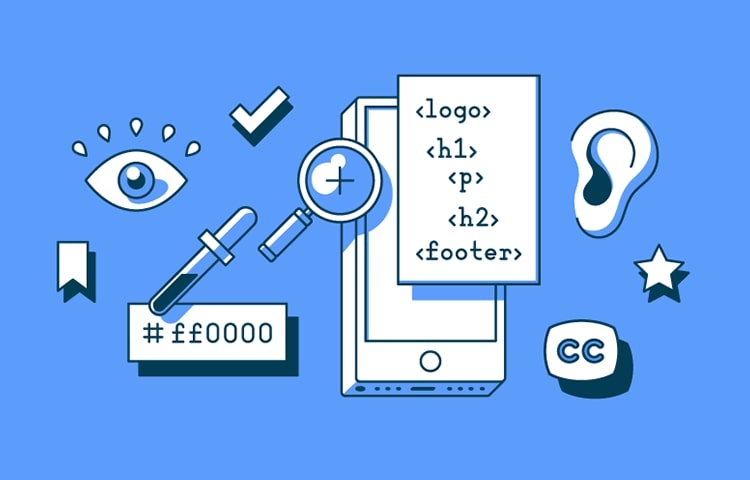
As A/B testing is becoming more common, many low-cost tools are now available and not all of these tools are equally successful. Some tools slow down the site considerably, while others are not tightly integrated with qualitative tools that contribute to data degradation. Testing A/B with such defective instruments will endanger the effectiveness of your test from the outset.
Testing the wrong timing
Run A/B tests for a certain amount of time on your traffic and objectives before statistically significant. The test may cause a test to fail or lead to negligible results for too long or too short a time. Since the first few days after the trial launch, one version of your website seems to have been won, that doesn’t mean you can call it off and announce a winner early on. It’s also a common mistake for companies to encourage a campaign to continue for too long.
Another common timing mistake is related to the nonlinear comparison of different time periods. You cannot compare split test results between a high-traffic day and a low-traffic one. Also, if you’re an e-commerce retailer, you can’t do split testing with holiday boom sales and slump season results. In both cases, You are not comparing the same thing to the same in all scenarios, so you won’t achieve consistent outcomes. The alternative is to run your test for comparable times so that you can reliably determine what changes have improved.
It is also necessary to be mindful of external variables that could influence the outcome of your split test. You won’t get the traffic or the results you want when you advertise locally and power comes out because of a natural catastrophe. And an offer linked to winter would not have the same effect as summer.
Unbalanced traffic

You must also have the right volume of traffic as well as the correct test time. In general, the campaigns must be tested with enough participants to produce real outcomes. When you have a high-traffic site, due to the continued flow of visitors to the site you can complete split tests easily. You will need a little longer if you’ve got a site with low traffic or intermittent visits. It is also necessary to break the traffic in the right way so that you really try to do so.
Using invalid hypothesis
A hypothesis is conceived in A/B testing before a test is performed. It depends on all the next steps: what should be done, why should it be changed, what the intended result is, and so forth. The likelihood of the test following will decrease when you proceed with the wrong hypothesis.
Note that all elements are required for a valid assumption: data observation, explanations speculation, a theory of how something is to be fixed and results in measurement after a change is made.
Split testing too many elements
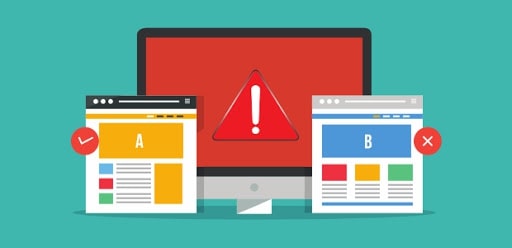
It is impossible to find out together which factor most affected the performance or failure of the test by testing so many elements of a website. The more components being checked, the more traffic on the website has to be used to justify statistically relevant research. Therefore, priority testing is important for effective A/B testing.
Measuring incorrect analytics results
Measuring results is just as critical as measuring, but it is one environment in which people make expensive A/B testing errors. You cannot rely on your reports, nor can you make data-driven decisions on your marketing when you do not calculate performance correctly. One of the easiest ways to do this is to ensure you use Google Analytics to work on your A/B research approach.
A/B Testing Example: Email Marketing
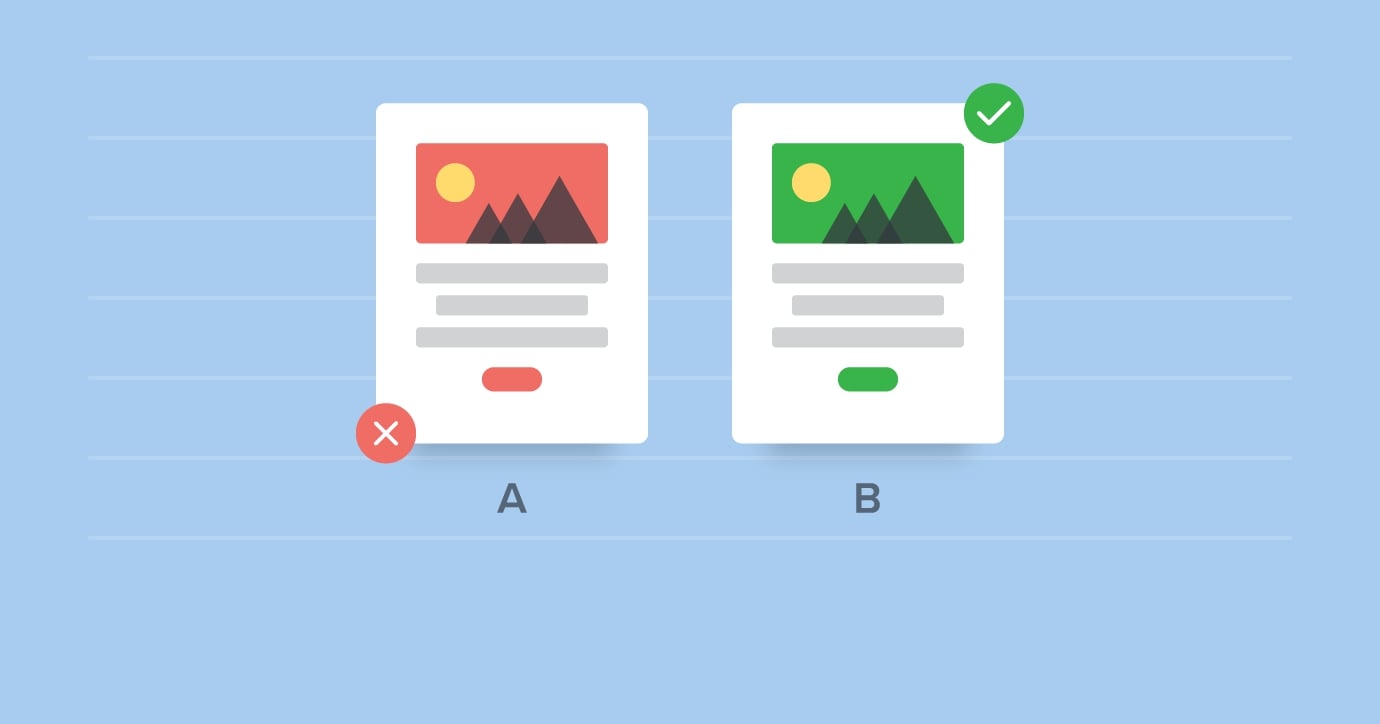
Email marketing involves optimizing the opening, clicking, and response speeds while creating as much guidance for and revenue for a specific email campaign as possible. However, in our time of overloaded email boxes, your potential clients cannot open your emails as they have received so many of them. The truth is, nobody else can picture your company’s ideal email campaign — that will rely on a host of items we discuss later on. As a result, A/B testing is the best way to plan and write the most powerful emails.
Why A/B testing matters in email marketing
As you can see, email marketing returns an average of $40 per dollar spent , an upgrade on displays or banner ads. As email marketing is a commercially beneficial area, conducting email A/B testing will do more good than harm.
Firstly, you can accelerate your click and open rates by identifying common trends and conduct. In addition, the conversions will be improved and revenues generated by the study of the funnel and traffic sources which are vital to determining how many opened messages have actually contributed to leads or sales. You will get a detailed assessment of the email marketing ROI, a positive start to help boost conversions and profits. This is a good start.
After a few definitive tests, your upcoming email marketing efforts will quickly be successful. You will discover big differentiating factors. With A/B tests, you will produce emails that are tailor-made and suit your prospects. And in order to conduct a successful A/B test that can leverage your email marketing campaigns to a new level, you may need the help of a smart and accessible email marketing service provider, with AVADA Email Marketing being one prominent name that is worth taking a look at.
What to email A/B testing
There are various variables you can A/B test for your email marketing campaign. Here is the list of the most common email A/B testing elements you can consider for research purposes:
- Subject and headline
- Images and videos
- Email design and layout
- Preview text
- Copywriting (length, tone, word order, etc.)
- CTAs
- Links and buttons
- Different testimonials
Example: Tone
The tone of your email campaigns will greatly affect the amount of clicks you get. Studies suggest that you are targeting your reader’s brain even more often if you add positive information into your copy, so that you can grasp your main points quickly and increase desire to click and buy the items.
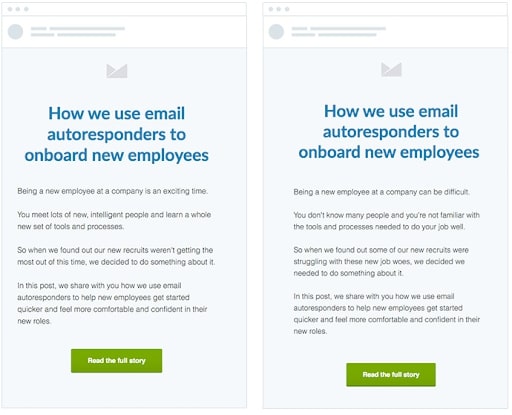
Let’s take a look at an example by Campaign Monitor. In version A, they used pessimistic language in version A to underline the “bad’ reality of beginning a new position. In order to produce a clear sense of negativity and disabling reader behavior, they have specifically used language such as “difficulties,” “do not know many people.”
However, in email Version B, Campaign Monitor has consciously used optimistic terms such as ‘exciting,’ ‘new, intelligent people’ and ‘learning a whole set of new tools’ to make the email sound a lot more positive. The test revealed that their email conversion rate had increased by 22 percent with positive words used. Therefore, the next time you write a copy of your e-mail marketing campaigns, think about the tone and see if a positive tone could exceed a negative tone.
Final Words
A/B testing is invaluable to increase the conversion results on your website. A/B testing will eliminate many of the risks inherent in the operation of optimization systems if achieved with maximum commitment and the expertise you already have. It will also boost the user experience website dramatically by the removal of all bad links and the optimization of the website update.
New Posts






